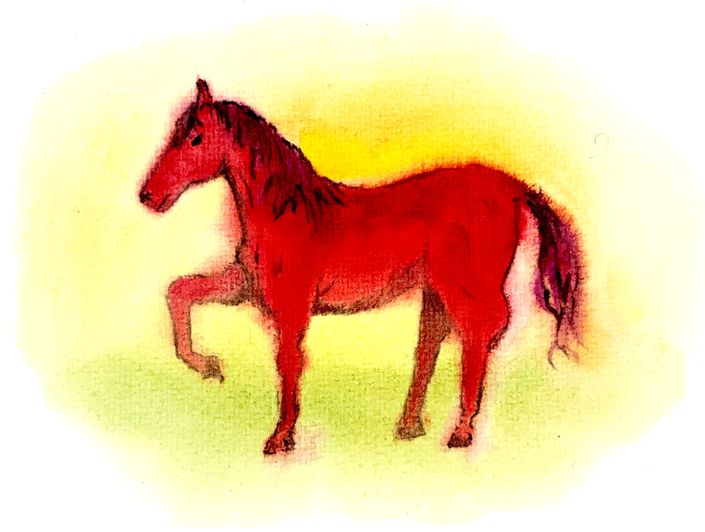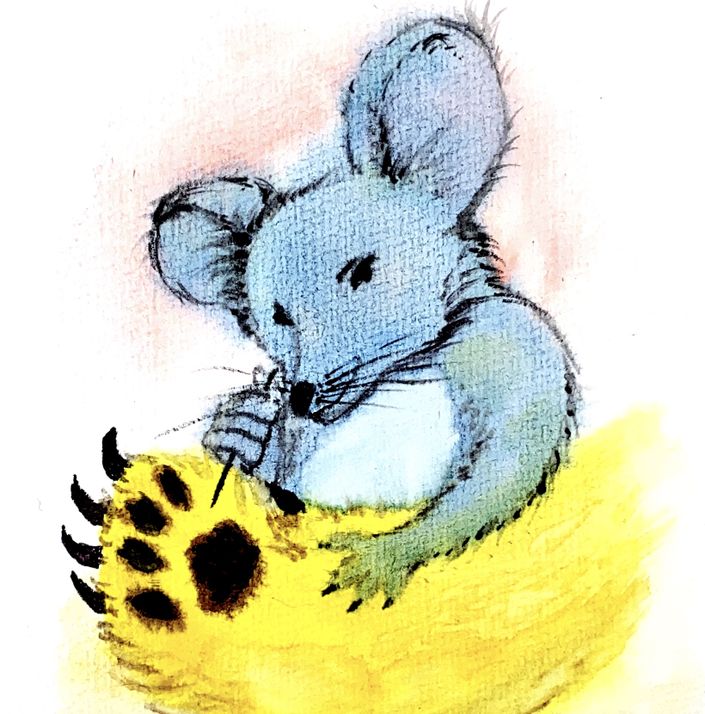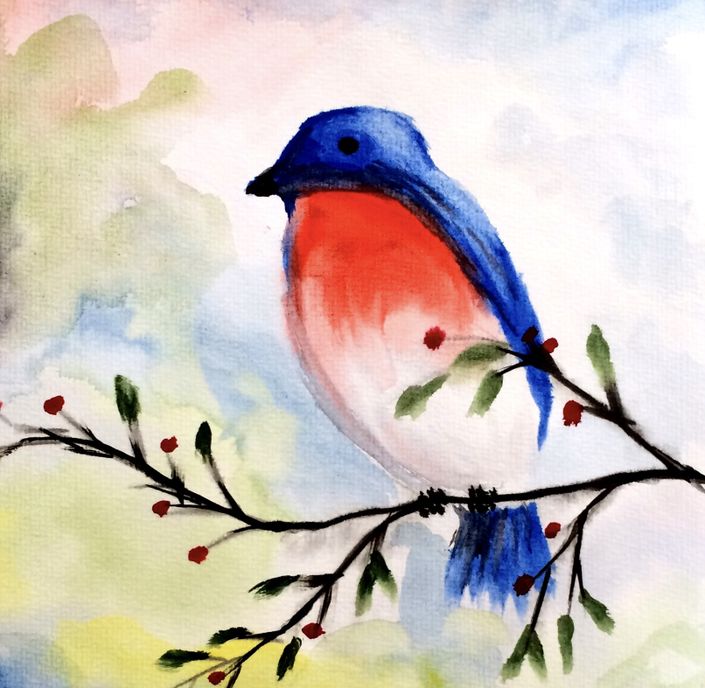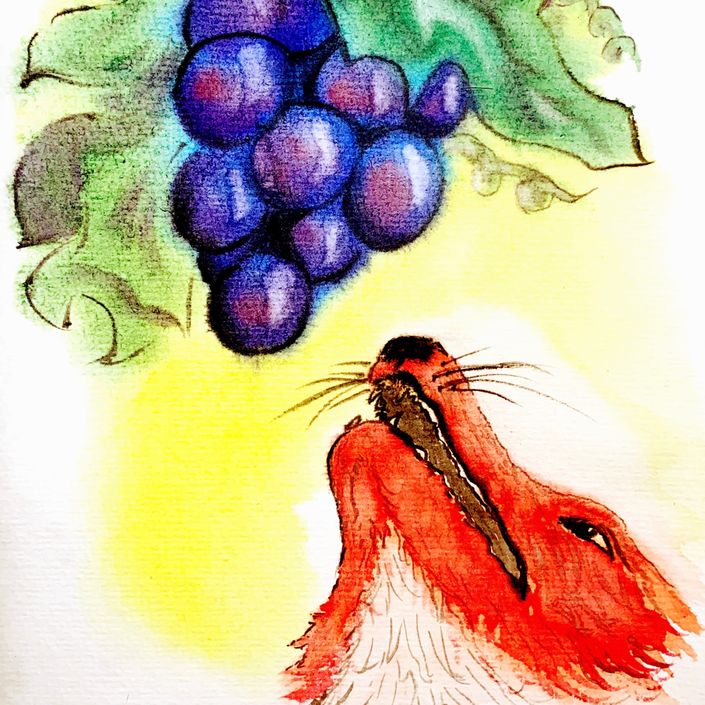Second Grade Storytelling Course
In Waldorf Education, at the very core of its principles, requires the teacher to consider the child first, not the curriculum. So, before we consider what goes into a second grade course, let's consider the second grader. The second grader is a 7/8 year-old child. While there are many things we can say about this age of childhood, let's keep it simple. Children love stories. Also, at this age the child has a consciousness dawning to the experience of duality or polarities. In other words, the child is beginning, just beginning to have an awareness of right/wrong, good/bad. Before this, they may have understood the behaviors that we have taught them, but now they are sensing the "goodness" itself within their own arising conscience. Naturally, as adults we know that life is not so simple as duality. As the children grow and mature, they will transcend this simplistic way of understanding the world and of understanding themselves. For now, however, this is right where they are. It is with this understanding that we can proceed.
Again, children love stories. With math and language arts, this means that we can derive our lessons out of stories and other imaginative sources that are already familiar to the child. They are familiar because we tell these stories to them. The stories we choose meet their evolving consciousness. We tell them fables and stories of good people, virtuous people. The fables most often give a picture of beings, usually animals, living into a trickiness, a lower nature. They are rascals. The good people stories offer the child a picture of people striving toward the highest ideals of human behavior. Thus, we have a duality that meets the child's soul. When we bring the lessons through the imaginations of such stories, the student experiences a process that is more immediately connected to their inmost being. The result is that they feel more connected to these lessons.
This course, of thirty-six total lessons, provides examples of how to tell such stories to the second grade student. We are not striving to entertain them. Storytellers can be very entertaining, but that is appropriate in a different setting. In the school setting, we want to present stories in a way that will optimally support the child's imaginative process. We want them to be more focused on building those inner pictures. If we strive to entertain them, we actually distract them. Instead of being focused on their inner world, they are focused on us.
When we come to the lessons that are built from the images of the stories, they will have a rich and deeply impressed experience if they have fully imagined those stories we told. Then they begin a language arts lesson or a math lesson with a beautiful foundation.
How do we know that the child is imagining? We will sense it over time. There are a few clues along the way however. First, they will be looking at us, but they are not completely with us. They are in two worlds, mostly in their own inner world. Sometimes they will even be looking at us with their mouths agape. Over time, we will see that they actually have memories of the stories. We may even find that they do their own free drawings of images from the stories. Also, we may find that they want to act out parts of stories in their free play. When we see these things, we know that the stories are sinking in deeply. This is ideal.
So we support this imagination by telling stories in the appropriate way. This is always a balance. There are archetypal gestures we can use and we must learn to balance enough gestures, but not too many. We learn to use our voices calmly, with variances but not with overly-dramatic effects. We also learn how to allow the images to speak for themselves. We do not need to wink at the listener, to give the listener hints, or to explicitly state the "moral of the story". We learn to give the child the gift of sleep and time. These things work like an oven. The imaginations go in like bread dough and are baked slowly. The child may have questions, but this does not mean that we always need to answer them. Sometimes, it is a great gift we give them when we let them contemplate. Through this they learn that living with things can be a very rewarding experience. When we revisit things inwardly, we find new insights, deeper understanding, and sometimes previously-hidden meaning. Through this we counter-act our modern-world tendency to do everything as quickly as possible, to do something and just move on, to seek instant gratification, or to look for answers outside of one's self. Instead, the child learns that sometimes a slower approach is wiser, that patience is actually a virtue, and that there are deep wells of truth and wisdom within one's very own soul.
So, these lessons offer practical ways to work with storytelling that will support the practical aspects of education in second grade as well as the more profound lessons we need to provide for children today.
Second Grade Language Arts & Drawing Course
In Waldorf Education, at the very core of its principles, requires the teacher to consider the child first, not the curriculum. So, before we consider what goes into a second grade course, let's consider the second grader. The second grader is a 7/8 year-old child. While there are many things we can say about this age of childhood, let's keep it simple. Children love stories. Also, at this age the child has a consciousness dawning to the experience of duality or polarities. In other words, the child is beginning, just beginning to have an awareness of right/wrong, good/bad. Before this, they may have understood the behaviors that we have taught them, but now they are sensing the "goodness" itself within their own arising conscience. Naturally, as adults we know that life is not so simple as duality. As the children grow and mature, they will transcend this simplistic way of understanding the world and of understanding themselves. For now, however, this is right where they are. It is with this understanding that we can proceed.
Again, children love stories. With language arts, this means that we can derive our language lessons out of stories and other imaginative sources that are already familiar to the child. They are familiar because we tell these stories to them. The stories we choose meet their evolving consciousness. We tell them fables and stories of good people, virtuous people. The fables most often give a picture of beings, usually animals, living into a trickiness, a lower nature. They are rascals. The good people stories offer the child a picture of people striving toward the highest ideals of human behavior. Thus, we have a duality that meets the child's soul. When we bring the lessons through the imaginations of such stories, the student experiences a process that is more immediately connected to their inmost being. The result is that they feel more connected to these lessons.
This course, of thirty-six total lessons, is actually composed of 36 drawing lessons and 36 linguistic lessons. You will see, when you look at the second grade block rotation as well as the explanation of the three-day rhythm, that language arts is taught over the course of three days, with the overlap day being Wednesday of each week. On the first day, the story. On the second day, the drawing. On the third day, the academic lesson.
Because the lesson-building process involves the creation of artwork on that "second day", these video lessons will guide you through the process of creating the drawings. At the same time, this course is not meant to be an introductory art course. That being said, we are working with first-grade level drawings. So, if you are new to visual artwork, this is a great course to help you gain confidence and skill. It is also important to remember that many students will surpass us anyway. When they are brought to artwork early in life, they have a much easier time later on developing to great heights. It is certainly important that we give them some foundational skills. However, the most important thing we can give the young student is the example of someone who is willing to strive and who does not engage in the detrimental self-critique. We give it our best efforts and move forward. We will definitely see things that we want to improve and we strive to do that in the future. We do not waste any time or energy degrading ourselves for some lack of perfection. When the teacher can embody this everyday--and sometimes it means we have to be able to laugh at ourselves in a healthy way--then we give the young student one of the most important gifts imaginable.
In second grade language arts, we work with simple sentences derived from the stories and from those sentences, we work with word families that exemplify the most common spelling conventions within the English language. We have the CVC words (consonant-vowel-consonant), the CVCE words (the silent-e words), the long and short vowel sounds, the vowel teams, consonant blends, digraphs, and diphthongs. As the second grader learns and practices these things, they also learn the skill of decoding new words, (what is commonly known as "sounding out" new words). The ability to decode is important at this stage of development. Of course, we also expose the students to a few of the exceptions within English language, words that do not follow the rules. The word "light" for instance, does not really make any sense to the new reader who is learning the fundamental phonetic rules of English. Still, there are certain exceptional word families or spelling conventions that are common within English, and the new reader must learn to acquire a sight recognition of these words too.
Second Grade Math Course
In Waldorf Education, at the very core of its principles, requires the teacher to consider the child first, not the curriculum. So, before we consider what goes into a second grade course, let's consider the second grader. The second grader is a 7/8 year-old child. While there are many things we can say about this age of childhood, let's keep it simple. Children love stories. Also, at this age the child has a consciousness dawning to the experience of duality or polarities. In other words, the child is beginning, just beginning to have an awareness of right/wrong, good/bad. Before this, they may have understood the behaviors that we have taught them, but now they are sensing the "goodness" itself within their own arising conscience. Naturally, as adults we know that life is not so simple as duality. As the children grow and mature, they will transcend this simplistic way of understanding the world and of understanding themselves. For now, however, this is right where they are. It is with this understanding that we can proceed.
Again, children love stories. With math, this means that we can derive our lessons out of stories and other imaginative sources that are already familiar to the child. They are familiar because we tell these stories to them. The stories we choose meet their evolving consciousness. We tell them fables and stories of good people, virtuous people. The fables most often give a picture of beings, usually animals, living into a trickiness, a lower nature. They are rascals. The good people stories offer the child a picture of people striving toward the highest ideals of human behavior. Thus, we have a duality that meets the child's soul. When we bring the lessons through the imaginations of such stories, the student experiences a process that is more immediately connected to their inmost being. The result is that they feel more connected to these lessons.
This course, of thirty-six total lessons, provides activities that will help the child find a deeper understanding of the written skills we teach them in mathematics. We continue to build our mastery of the four processes, addition, subtraction, multiplication and division. As the child gains skill and confidence, we are engaging in activities that will obviate why we need to write the processes for carrying in addition and borrowing in subtraction. When they have a meaningful understanding of the written, abstract work, they are far more likely to feel confident in math. They are more likely to begin their academic journey with a good relationship to this particular subject, which is a subject that many people struggle with over time. How much of that struggle leads to a negative identification? In other words, how often do people reach the self-judgment: "I am not that good at math?". Certainly, we cannot all be math wizards. At the same time, it is possible to create a more positive and productive experience for students so that, at the very least, they can feel confident and competent at math.
For this they need two things. The first can be accomplished through lessons like the ones in this course. In such an approach, we keep a real-world connection between what we do mathematically and what we write mathematically. The second happens at home: the daily practice of the basic skills. They must practice and master their addition facts up to 20, their subtraction facts to 20, their multiplication tables (2's, 3's, 4's, 5's, 10's and 11's), and their division tables (2's, 3's, 4's, 5's, 10's and 11's). When these are memorized, the child has the ability to focus on the processes. When theses are not memorized, the learning is compounded. Instead of being able to focus on a new process, they feel constantly frustrated that there are answers that they simply do not know. In this state, the child remains in a state of constant overwhelm.
So, be aware that this course is designed to help with one part of that. The 36 lessons will give you clear examples of how to introduce activities and written work that are integrated to guide the student on an incremental path of meaningful steps toward new skills.
The other part, the daily practice of those rudiments of math, must become a daily habit for yourself and your student(s). As with the acquisition of any new habit, you must use your will to make it happen for about 40 days, or approximately six weeks. After that, the activity will have its own momentum. It is simply part of our daily routine. You will see this with the child too. So, if you experience some resistance at first, keep going with faith that the momentum is building and soon it will carry things along without so much need to push.
Second Grade Handwriting Development Course
This is a mini-course that outlines some daily practice routines that will support healthy development of handwriting.
The first question that often arises among parents and new teachers goes along these lines: "When the modern world is so full of digitalized technology, wouldn't it better to focus on keyboard skills rather than handwriting?"
This is a fair question. It would take a lot of writing to cover the reasons that we choose to keep this important skill in Waldorf education. So, within the course, I have included links to multiple articles that provide the results of modern neuroscience research. These studies have found repeatedly that the act of handwriting is a fundamentally human activity, one that directly supports the learning process as well as the memory forces. The keyboard is not an evil to be shunned. It is simply a tool that is more appropriate later in the student's developmental path. Before that becomes a ubiquitous tool for them, they actually NEED to learn handwriting.
So, over the course of these lessons, which can be followed according to the provided schedule for a school year, you will build a regular daily habit of practice. As this becomes a routine, and as it is repeated over the course of days and weeks, you will find that the child's handwriting will become an asset rather than a source of frustration and confusion. Make no mistake, at first this will require the parent/teacher's determination. So, we must balance the strength of our wills with the grace of patience. We certainly require the daily work. At the same time, we are patient in our expectations. Meaningful development will take time. After a couple of months, we will experience the first real signs of development. The practices will have more of their own momentum. The struggle to simply do the exercises will not be as present.
These lessons are appropriate for the early grades and they focus on exercises that will support print as well as exercises that will support cursive writing.

Hi, I’m Rev Bowen
“Rev Bowen, M.A. (Human Development)
After graduating with a BA in English (1996), Rev completed his Waldorf Grades Teacher training at the Rudolf Steiner College in 2000. He taught as a grades teacher for 18 years, taking two classes from first to eighth grades and one class for seventh and eighth grades. During those early teaching years, he completed his M.A. in Human Development through St. Mary’s University (2004). From 2018 - 2020, Rev served as the Pedagogical Director of the school’s College of Teachers and then spent the 2020-2021 school year as the School Administrator. He currently continues to teach several subject classes while developing courses for Simply Waldorf.
Along with having taught all of the main lesson courses in grades one through eight, Rev has taught many subject classes such as: handwork, woodwork, sculpting and modeling, painting, drawing, form drawing, perspective drawing, recorder and flute, hand bells, percussion, choir, drama, and games and movement.
During the last 22 years, Rev has been a keynote speaker, presenter, and teacher for various conferences and trainings, with these events being offered to Waldorf teachers, charter school teachers, public school teachers, and parent-educators. He has observed, evaluated, and mentored many teachers during that time as well.
While Rev has never taught a homeschool curriculum to students, he has been involved in consultations and conversations with homeschooling families for the last few years and he has designed other courses, prior to Simply Waldorf, for homeschooling parent-educators. Another interesting note is that Rev had one of his children in his elementary class for eight years, which has helped him to relate to parent-educators who discover the rewards and challenges that come with trying to balance the roles of parent and teacher for the same child or children.
It was during the recent years, while developing the homeschooling resource courses, that Rev realized how important and needed such courses were for those families who courageously choose to homeschool their children. Those conversations and experiences serve as the inspiration for creating Simply Waldorf and more resource courses for parent-educators.”
Bundle Contents
Get all four courses as a bundle and save!





